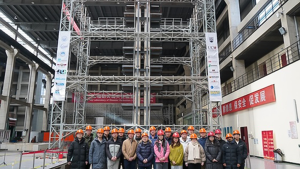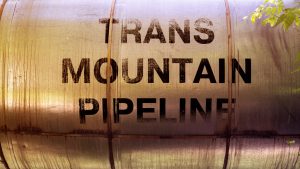There’s still some tweaking to do on the methodology, but a bridge deck using inlays of conductive concrete to keep the deck free of ice and snow is successfully making its way through its fourth consecutive Nebraska winter.
Innovation
Inventor says small safety issue easy to address
There’s still some tweaking to do on the methodology, but a bridge deck using inlays of conductive concrete to keep the deck free of ice and snow is successfully making its way through its fourth consecutive Nebraska winter.
Durability and stability are being closely monitored on the small 46 by 11 metre bridge which crosses a creek. The deck was built of conventional reinforced concrete, but with an inlay of conductive concrete cast in 52 individual slabs forming a running surface of 36 by 8.5 metres.
Now, halfway through its fourth winter of a five-year pilot study for the Nebraska Department of Roads, the deck is performing well, says Chris Tuan, a University of Nebraska professor who devised the special mix for the slabs.
“Obviously, it works,” he said during a telephone interview. “The roads department wasn’t sure at the outset whether the concrete could maintain stable conductivity over the years, but the data we’ve collected shows that it can. The electrical conductivity (in the slabs) is very stable.”
Power used to heat them is taken from a nearby line. It turns on automatically when the slab temperature falls below 4.5° C and turns off when the temperature reaches 12.8° C.
Tuan said that if after the fifth year “everything is still working okay, the department will try to implement this system at accident-prone areas.
“That would include some exit ramps and street intersections where there is a slope.”
Before any more installations take place, an objection from Underwriters Laboratories has to be overcome.
"Some de-icing chemicals become ineffective in high winds and low temperatures, but those conditions don't affect the electrical system."
Since the concrete is reinforced with both steel and carbon fibres, UL has raised concerns it doesn’t meet national codes and, when powered up, it could cause electric shocks because of stray current at the surface.
“The current amount is very small,” Tuan counters. “It’s just 35 milliamps. But that exceeds the tolerance of the national electrical code, which is five milliamps.”
Tuan acknowledges that whether the current can cause shocks or not “depends on the person,” adding with the power on and the deck wet, “some people can have a tingling sensation in their fingers if they touch the pavement.
“Personally, I have never felt anything.” Then, laughing, he added: “Maybe my blood isn’t rich in iron or something.”
He expects the concern can be resolved simply by covering the slabs with a few centimetres of conventional concrete.
Steel and carbon fibres in the concrete mix allow it to attain stable electrical conductivity. Due to its electrical resistance, even a thin layer can generate enough heat to prevent ice formation, or to melt ice and snow. The conductive slabs used by Tuan are just 10 centimetres thick.
He has had a number of inquiries about his concrete, although he hasn’t done much yet to market it.
“One gentleman in Minneapolis sent me an e-mail. He wanted to do 4,000 square feet of driveway with conductive concrete. I get these inquiries constantly. When people send me these inquiries, I don’t know what to do. I’m a professor, not a salesman.”
Since it is the university and not Tuan personally who holds the patent, a group of students from the university’s business administration program is working on a plan to market the technology.
Although conductive concrete costs three to 3.5 times more than conventional concrete, Tuan said savings result because salt and de-icing chemicals are not necessary.
“Some de-icing chemicals become ineffective in high winds and low temperatures, but those conditions don’t affect the electrical system. It’s an important point to note.”
Indirect savings are more difficult to measure. Installation on roads or bridges would likely result in fewer accidents caused by slippery road surfaces.
Tuan said he would like to see the material used for airport runways, using the example of three heavy snowstorms that hit Denver International Airport earlier this winter, closing it for a few days each time, and severely curtailing operations for several more.
“They could have used it to keep at least one runway open,” he imagines.










Recent Comments
comments for this post are closed